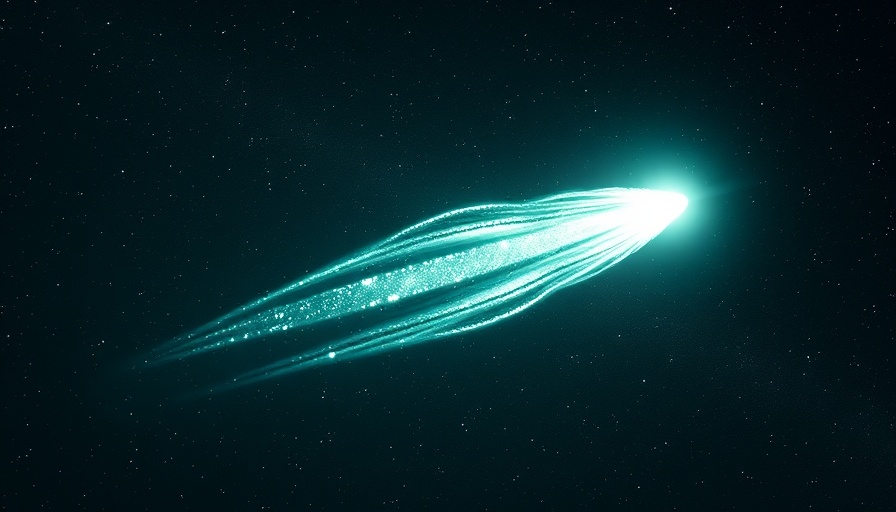
Striking Images of Comet Lemmon’s Tail
Astrophotographer Brennan Gilmore recently showcased remarkable images of Comet Lemmon, where the solar wind caused a vast section of the comet's tail to be torn away. Comets always hold a certain allure, and Comet Lemmon is proving that allure can be stunningly visual as it comes closer to our planet. With its brightness increasing rapidly since its discovery on January 3, there is growing excitement that it could become a visible comet to the naked eye by October’s end as it approaches perihelion—the closest point to the sun in its 1,350-year orbit.
Understanding the Solar Wind's Impact
The fascinating dynamics of a comet's tail are largely driven by solar winds: a stream of charged particles released from the sun. It’s remarkable how these solar winds can reshape a comet’s tail, pushing gas and dust outward, regardless of the comet's trajectory. As seen with Comet Lemmon, the solar wind not only affects the tail's direction but also its composition and brightness. This phenomenon highlights the ongoing interactions within our solar system and the visible impacts of solar activity on celestial bodies.
Observing the Brightening Comet
Observers note that Comet Lemmon’s brightness has increased to magnitude +5.1, allowing for potential visibility to the naked eye from darker areas. This brightness offers an intriguing opportunity for amateur astronomers and photographers alike to capture the wonder of this icy wanderer. With Comet Lemmon scheduled to reach its closest approach to Earth on October 21, enthusiasts are encouraged to prepare their equipment for optimal viewing conditions.
A 60-Minute Timelapse Adventure
In addition to breathtaking images, Gilmore has released a captivating 60-minute timelapse of Comet Lemmon. This visual documentation allows viewers to witness the disconnection event on October 2, which is when a significant portion of the tail was stripped away by the powerful solar winds. Utilizing specialized equipment, such as the Takahashi Epsilon 130D Newtonian telescope and a ZWO astronomy camera, these visuals share detail and clarity that could inspire any aspiring astrophotographer.
How to Witness the Comet
Astrophotography plays a vital role in enabling enthusiasts to create lasting memories of transient celestial events. If you want to capture your own images of Comet Lemmon, consider using advanced camera gear like the Nikon Z9. It’s a premium choice that offers unparalleled performance for astrophotography and landscapes. Those interested should familiarize themselves with recommended techniques for photographing comets, as well as ideal viewing conditions.
 Add Row
Add Row  Add
Add 




Write A Comment